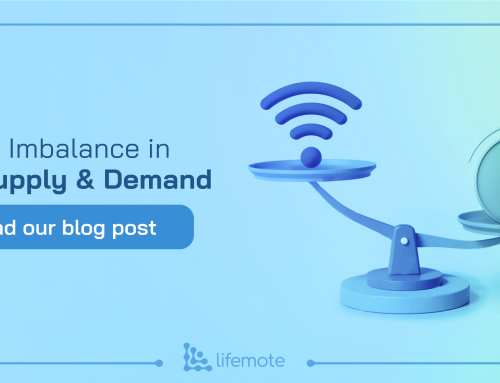Fifteen years ago, smartphones were the only wireless clients in the majority of households. However, with the introduction of a variety of new wireless client types, there has been a rapid increase in the number of Wi-Fi clients residing in a household. Today, an average house can contain a wide range of wireless devices besides smartphones – including laptops, tablets, smart TVs, security cameras and so on. As a matter of fact, the average number of wireless clients is expected to increase even more in the future.
Wi-Fi technology underwent a swift evolution to catch up with the substantial demand created by the increased number of wireless clients. The transition from 2.4 GHz-only Wi-Fi 4 CPEs (802.11n), to dual-band Wi-Fi4 CPEs, to Wi-Fi 5 CPEs (802.11ac) was able to sustain the needs of these wide range of wireless clients, up to now. We are at the dawn of a new era with the arrival of brand-new Wi-Fi 6 (802.11ax) CPEs. Wi-Fi 6 technology is excitingly promising with its increased number of streams, performance in multi-device households and fastest real-world throughput. However, Lifemote analytics indicate that most end-users will not be able to tell the difference between Wi-Fi6 and the oldest single-band Wi-Fi4 CPEs, and you can find out why below.
Problem Definition
Lifemote offers advanced insights for reactive Support Center complaints along with the ability to proactively maintain and fix a broad range of Wi-Fi issues with a data driven methodology relying on daily analysis over the entire population data. One of the main use cases of Lifemote’s Proactive Taskforce is how much time clients spend on 2.4 GHz and 5 GHz bands.
Lifemote analytics indicate that clients tend to spend 30 – 70% of their time on 2.4 GHz while connected to a Wi-Fi 5 CPE in Split SSID configuration, while this range is 50 – 70% in Single SSID configuration. Those who spend majority of their time in 2.4 GHz are not utilizing their Wi-Fi 5 CPEs to their fullest potential. Customers are buying “gigabit” internet packages from their ISPs while their clients are unknowingly roaming to 2.4 GHz, which will never be able come close to such speeds. Upgrading homes with such clients to a Wi-Fi 6 CPE with similar roaming will not have any positive impact on the customer satisfaction, and in fact may further reduce customer satisfaction given their perception that they can’t get high speeds even with a latest tech CPE. ISPs should expect to see around 60% of traffic flow over 2.4 GHz in Split SSID configuration even if they provide Wi-Fi 6 CPEs to their customers. Moreover, poorly set band-steering parameters can result in around 50% of traffic flow over 2.4 GHz in Single SSID configuration even when a Wi-Fi6 CPE is provided to the customers.
Solution
Upgrading to a Wi-Fi 6 CPE and still using the 2.4 GHz band is like buying a muscle car and driving it in first gear. Most of Internet users are not aware of the difference between 2.4 GHz and 5 GHz bands or their SSID configurations. It is the ISP’s responsibility to maximize the performance their customers are getting from their CPEs by fixing the support center flow and effectively managing their network. ISPs can shed light on a broad range of Wi-Fi problems using the extra visibility Lifemote provides. Lifemote helps ISPs deliver an enhanced experience by proactively helping them reach out to customers even before they have any issues. Given that, it is possible to monitor the band steering performance of the whole population and optimize the steering parameters in Single SSID configurations. Also, identifying capable customers that are still using 2.4 GHz to be manually shifted to the 5 GHz band in Split SSID configurations is included in Lifemote’s capabilities. To sum up, just providing customers with high-tech CPEs is never enough – the ISP must make sure these CPEs are used to their fullest potential by utilizing a proactive approach, such as offered by Lifemote.



